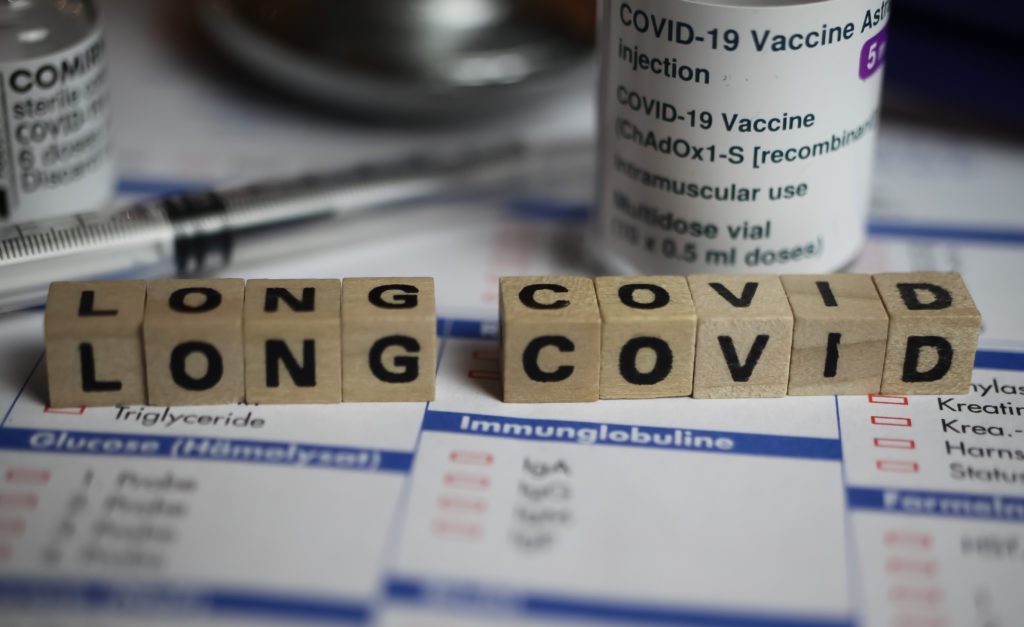As seen in Psychology Today.
One of the most enduring questions about the COVID-19 pandemic continues to be the long-term effects of SARS-CoV-2 infection. Given how pervasive infection has been, particularly during the omicron surge, this could have a tremendous impact not only on individual patients but specifically on healthcare systems and to a large extent on the economy for years to come. Evidence is already showing that the risk of major depressive disorder is increased following infection.
There is evidence that SARS-CoV-2 infection can lead to neurological or psychological symptoms despite initially being considered a respiratory virus. These symptoms may include confusion, fatigue, anxiety, or depression. Most studies have concluded that the virus does not (or may only very rarely) infect brain tissue, and that these symptoms are just complications that fade over time as the body recovers from the initial infection, but more importantly can still persist for several weeks.
Some people are not so lucky and continue to experience distinct symptoms in the wake of the infection. This phenomenon, known as long COVID or post-acute sequelae of COVID-19 (PASC), is estimated to affect close to 50% of individuals for at least six months after the initial infection. Some of the most common symptoms include a persistent cough, dyspnea, headache, olfactory and gustatory defects, and gastrointestinal issues, as well as psychiatric and neurological complications.
Between 35% and 56% of patients who have recovered from COVID-19 have reported experiencing symptoms that include anxiety, depression, insomnia, and obsessive-compulsive behaviors, as well as some of the core symptomology of trauma- and stress-related disorders, including posttraumatic stress disorder (PTSD).
There are several theories as to why symptoms may persist after the primary infection has resolved. The most promising theory suggests that the primary culprits are insoluble microclots that form after trapping inflammatory molecules. These microclots then damage vasculature and starve cells of oxygen. Though this hypothesis is still being tested, the theory does provide an explanation for the symptom constellation that has been characterized as long COVID, including many that are cognitive or psychological in nature. The fact is that an adequate amount of oxygen is essential for brain functioning, so hypoxia seems like a reasonable cause for the reported impairment.
While some patients may experience symptoms primarily due to neurophysiological phenomena following acute infection, others may experience stress-related psychiatric symptoms. The last two years have been extremely traumatic and disruptive for many, and it seems extremely likely that a combination of fear, social isolation, financial instability, social unrest, and a pervasive culture of despair have contributed to the deterioration in many individuals’ mental health. However, it remains unclear as to what percentage of psychological symptoms are related to pandemic stressors versus the residual effects of viral infection or to what degree the two overlap.
For clinicians, being able to distinguish between symptoms that are due to previous viral infection versus other conventional etiologies is of vital importance, since this will dictate how we treat our patients.
More importantly, how do we assess a patient who describes a deterioration in their behavior, mood, and activities?
1. Ask If They’ve Tested Positive for COVID-19
To start, we should ask patients if they have tested positive for COVID-19 in the past. While a positive COVID-19 diagnosis is not a guaranteed indicator of prior infection, it is still a good place to start, since many patients may experience very mild symptoms or be asymptomatic. Serology tests are more predictive of previous infection. To state the obvious: Without being infected with the virus, one cannot develop long COVID.
2. Ask About Concomitant Symptoms
As mentioned above, long COVID is not just a psychiatric or neurological disorder, but a constellation of multi-system symptoms that include fatigue, headache, dyspnea, myocarditis, joint, and gastrointestinal problems. While it is possible that some patients’ long COVID may be characterized by isolated psychiatric symptoms, it is highly unlikely.
Consequently, if a patient tested positive for COVID-19 in the past and their symptoms have only recently emerged, clinicians should ask if the patient has noticed any other signs or symptoms. Even something as ostensibly unrelated as a rash, a change in the patient’s menstrual cycle, or heart palpitations could help determine the etiology of their psychiatric symptoms.
3. Ask About Pre-existing Conditions
A recent paper published in Cell has found that there are four risk factors that determine the disease trajectory at the time of initial COVID-19 infection: type 2 diabetes, Epstein-Barr virus viremia, specific autoantibody levels, and SARS-CoV-2 RNAemia. Though a clinician may not be able to test for viral loads months down the line that should have been done during the acute phase of the disease, they can still inquire about the risk factors including type 2 diabetes or if the person was previously infected with the Epstein-Barr virus (other studies have found a similar correlation in patients with underlying asthma). If the answer is yes, then they are at a greater risk of developing long COVID.
The researchers also found that elevated autoantibody levels may predate SARS-CoV-2 infection and may reflect subclinical conditions. Furthermore, specific autoantibodies appear to be associated with specific PASC symptomalogies and elevated levels can be detected well after the initial infection has passed.
Though these tools are still rudimentary, they can help us distinguish between symptoms related to stress or those due to pathophysiological changes following SARS-CoV-2 infection. Furthermore, the development of these tools suggests that we may be able to predict, diagnose, and treat long COVID. Clinicians who worry about facing a tidal wave of patients struggling with long COVID symptoms following the recent omicron surge should see these advancements as a reason for optimism after two harrowing years of this pandemic.


0 Comments on "How Clinicians Can Address Long COVID: Making sense of new studies that help pinpoint the phenomenon"